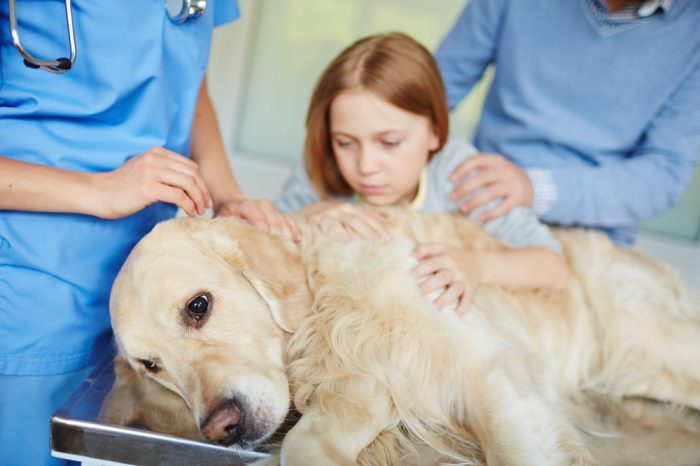The weird things dogs do bring people hours of enjoyment, but sometimes odd behaviors are a symptom of something serious.
Sometimes the weird things dogs do can signal some rather intense or uncomfortable problems lurking just beneath the surface. Dog body language has been studied for a long time, but some owners still don’t take canine behavior seriously, or worse, they try to modify the behavior in cruel or ineffectual ways.
Not that dogs are never goofy — that’s why we love them — but sometimes the seemingly innocuous behavior your dog displays may not be happening out of a desire for fun or to signal boredom. Behaviors like repetitive circling, dragging their rears across the floor, or even yawning can be your pet’s way of calling for help.
It’s important to learn how to listen for that call, and to look for ways to help our pets — whether that’s with pharmaceuticals, therapy, or the many uses of CBD for dogs.
A Closer Look at the Weird Things Dogs do
There are many ways dogs can signal that they’re experiencing discomfort. While some are obvious, like walking with one foot held up to signal a hurt paw, many of their subtler behaviors can go unnoticed.
Here’s a quick look at a few common canine behaviors and how they translate into words.

Circling
Round and round Rover goes, but why he/she is moving in a circle not everyone knows.
Circling is a common behavior in dogs, with a host of theories as to why it happens. Some say it’s to prepare a comfortable bed for the night, others say it helps them take note of their surroundings. Another theory says that dogs like to align themselves with earth’s magnetic field before they defecate. But one thing every dog expert agrees on is that excessive circling is a problem.
When a dog compulsively turns around, it’s not harmless tail-chasing behavior. It can be the result of underlying anxiety, ear infections, liver disease, digestive issues, or mental illness. You can think of compulsive circling in dogs akin to pacing in human beings. It’s a ruminative exercise that usually indicates that something is amiss.
Something as ordinary as fireworks or eating too much junk food can cause this. However, it can also be more serious conditions, like inner-ear problems, or a canine tic. If the behavior persists, it should be treated. Digestive issues, anxiety, and mood disorders can all be treated with special cannabis products formulated for dogs.
Yawning
Yes, this is a common signal in humans and dogs of sleepiness. But dogs also use yawns to signal their discomfort with a situation, in the same way they will sneeze to let others know they’re playful.
If you see your dog yawning when you grab your keys to head out the door, for example, it’s not a sign that Rover is about to nap but rather that he’s anxious that you’re abandoning him. You may seem similar yawning behavior during an obedience class or if another animal is eating your pet’s food.
Keep track of your dog’s yawns to see if there are certain situations that regularly produce yawns, that’s a sure sign of canine stress. If you can keep your pet away from those situations, that’s great. If not, consider treating your pet with a mild de-stresser like CBD.
Head Butting
Dogs will push their heads against their masters as a way of asking for attention. But if they begin to press their heads against the wall or a piece of furniture, it’s a sign something is wrong with their nervous systems.
Dogs don’t even have to physically press their heads against the wall. Instead, sometimes they simply position themselves in front of a wall, droop their heads, and stand there. In either case, this is cause for serious concern. Your dog won’t simply recover on its own in most cases.
If your dog is head pressing, it could be because of a number of reasons. These can include:
- brain or body tumor
- canine distemper
- consuming poison
- a degenerative disease
- or a neurological malfunction
The best advice if your dog is head butting the wall is to get her to the vet. Once the doctor determines the cause of the behavior, treatment becomes possible. If psychological issues are to blame, consider researching how cannabis can help dogs with dementia and other mental illnesses.
Dragging Their Butts Across the Floor
This may seem like standard odd dog behavior, but when dogs scoot across the floor or a patch of grass on their rear ends, they’re likely trying to address an anal irritation.
Dogs’ behinds become swollen and itchy for a number of reasons. These include diarrhea, yeast infections, or an inflammation of the anal glands. It could also be a sign of cancer.
Sometimes, a diet change can help – such as adding more fiber or probiotics to your dog’s meals. In other cases, giving your dog CBD snacks can help calm inflammation or help relieve the symptoms of cancer.
Every dog owner wants to do right by their canine companion, so be prepared to think twice the next time you observe the weird things dogs do — if it’s a repetitive behavior, there’s a good chance the dog is dealing with a long-simmering problem.

CBD for Canines
Like humans, dogs have an endocannabinoid system. This means CBD can interact directly with many of their major organs and systems. Studies are early, but there are many indications that CBD may help dogs in the same way it helps people.
Cannabis products can help the symptoms of many of the weird things dogs do. The results are so positive that cannabis has secured many veterinarian’s seal of approval. It’s no longer an alternative therapy — CBD is evidence-backed medicine for dogs.
CBD is natural and easy on a dog’s system. However, don’t simply buy some from a gas station and feed it to your pet. Look for high-quality CBD products, the kind verified by third-party lab tests, and specifically formulated for dogs. Otherwise, you’ll be chasing your tail and getting nowhere, or worse again possibly harming your dog with THC found in inferior CBD products.





